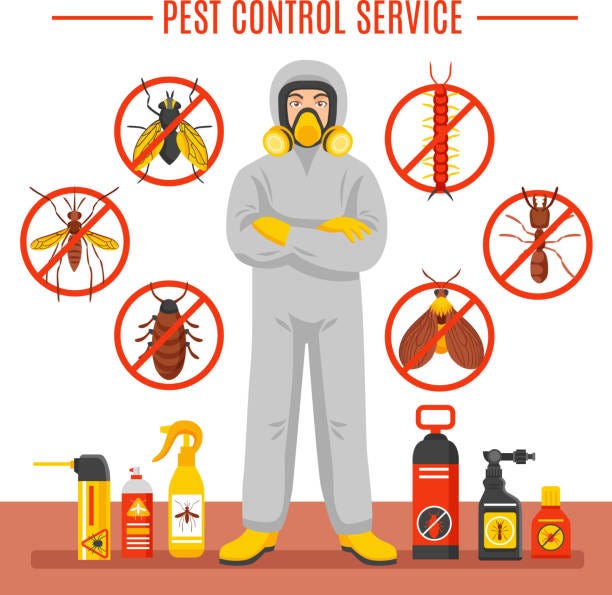A1 Pest Control Charlotte NC Bed Bugs - Specialist Elimination Services
Bed Pest Treatment Break Down: Comparing Chemical Vs. Non-Chemical Solutions
In the world of insect control, particularly when dealing with the relentless concern of bed insects, the selection between chemical and non-chemical therapy solutions can be an essential one. Both approaches use unique benefits and disadvantages, affecting elements such as performance, security factors to consider, and general expense. By taking a look at the nuanced details of each approach, a clearer understanding of which course to go after in addressing a bed insect infestation can be obtained.
Effectiveness of Chemical Treatments
Chemical therapies for bed pest infestations have been commonly identified for their potent and fast efficacy in eradicating these pests. When considering the performance of chemical therapies, it is crucial to recognize that they can give a thorough and fast service to a bed pest issue. Professional pest control experts typically depend on insecticides to target bed insects at different phases of their life cycle, including adults, eggs, and nymphs. These chemicals generally work by interrupting the bed insects' nerve system, bring about paralysis and ultimate fatality.
Additionally, chemical treatments have the benefit of offering recurring impacts, implying that they can remain to remove bed insects also after the preliminary application. This residual activity is especially helpful in combating any kind of possible re-infestations. In addition, the quick activity of chemical therapies can bring alleviation to individuals facing extreme bed pest infestations, enabling them to reclaim control of their living spaces rapidly.
Security Concerns With Chemical Solutions
One essential facet that requires cautious consideration when making use of chemical solutions for bed pest treatment is ensuring the safety of passengers and the atmosphere. Exposure to certain chemicals utilized in bed insect treatments can lead to respiratory problems, skin irritability, or various other unfavorable reactions, specifically in people with pre-existing conditions or level of sensitivities.
Moreover, the environmental influence of chemical services is an additional significant consideration. Some chemicals utilized in bed bug treatments might be damaging to beneficial insects, wildlife, and communities if they seep into the dirt or water systems. It is vital to make use of chemical treatments deliberately, complying with safety guidelines, and considering less poisonous choices to reduce these dangers and ensure the efficient and safe management of bed pest infestations.
Advantages of Non-Chemical Methods
Thinking about the potential safety and security issues and ecological effect linked with chemical remedies for bed insect treatment, exploring non-chemical approaches offers an encouraging option with a number of distinctive advantages. Non-chemical methods provide a much safer alternative for houses, specifically those with family pets, people, or children delicate to severe chemicals. These methods get rid of the threats of direct exposure to hazardous substances, lowering the possibility for unfavorable health and wellness effects. In addition, non-chemical treatments are eco-friendly, as they do not add to air or water contamination, making them a lasting option for pest control.
Additionally, non-chemical solutions can be efficient in targeting view publisher site bed bugs, including hard-to-reach areas where chemical treatments may not pass through. Methods such as warm treatment, vacuuming, steam cleansing, and bed mattress coverings offer detailed obliteration without making use of harmful chemicals. In addition, non-chemical methods can be much less disruptive, requiring very little prep work and permitting quicker reentry right into dealt with areas. Overall, choosing non-chemical bed bug therapy methods not only focuses on security and ecological protection however additionally guarantees reliable and extensive insect control.
Limitations of Non-Chemical Treatments

Furthermore, non-chemical treatments frequently need several applications to attain effective eradication. This can be lengthy and might not Full Report always ensure complete removal of all bed bugs and their eggs, especially in hard-to-reach or hidden areas.
Additionally, the success of non-chemical therapies heavily depends on proper execution and thoroughness, which can be challenging for people without expert knowledge. Insufficient application of non-chemical methods may result in incomplete obliteration, causing consistent infestations and the demand for extra therapies.
As a result, while non-chemical important source treatments have their advantages, it is vital to acknowledge these constraints and consider them when determining one of the most efficient technique for handling bed pest invasions.
Price Comparison: Chemical Vs. Non-Chemical Options
Given the restrictions connected with non-chemical therapies, an essential aspect to evaluate in the context of bed insect monitoring is the expense contrast in between chemical and non-chemical alternatives. In contrast, non-chemical treatments like warm treatment or vapor can be much more pricey, with expenses varying from $1,000 to $6,000 for a whole home. While the initial expense of chemical treatments might appear reduced, several treatments may be required to totally eradicate the invasion, potentially boosting the total expense.
Final Thought

Considering the potential safety and security issues and environmental impact associated with chemical services for bed pest treatment, checking out non-chemical strategies provides an appealing alternative with numerous distinctive benefits.Provided the limitations linked with non-chemical treatments, an essential element to examine in the context of bed bug monitoring is the expense comparison between chemical and non-chemical options. In comparison, non-chemical therapies like warmth therapy or heavy steam can be more costly, with costs varying from $1,000 to $6,000 for an entire home. While the initial expense of chemical treatments may appear reduced, numerous therapies might be required to totally eradicate the invasion, potentially raising the overall price.In conclusion, when comparing chemical and non-chemical bed bug therapy choices, it is vital to take into consideration performance, safety, advantages, restrictions, and price.